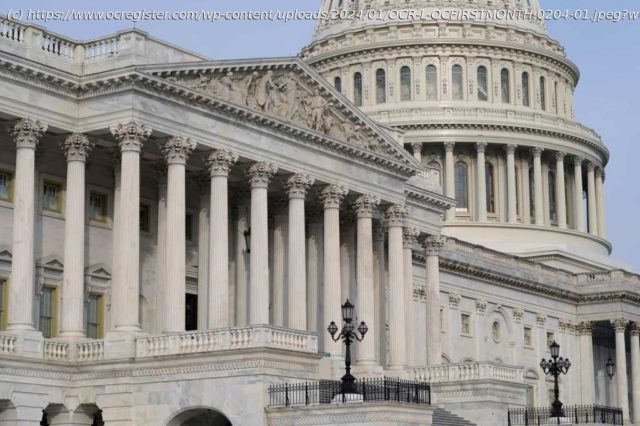What politicians in Washington are delivering now to the American people is an ever-increasing burden of debt.
A very happy Chuck Schumer went down to the Senate floor on Monday to brag about the deal he had cut on federal spending with Republican House Speaker Mike Johnson.
“First, I have excellent news on government funding,” Schumer said.
“Yesterday, I announced with Speaker Johnson that congressional leaders have reached a top-line agreement for government funding for the 2024 fiscal year,” he said.
“When we began our negotiations, our goal was to preserve a nondefense funding level of $772 billion — the same level agreed to in our debt ceiling deal last June,” he said. “That $772 billion was precisely the number we reached. Not a nickel was cut.”
“Both parties reached this agreement without resorting to the painful and draconian cuts that the hard right — particularly those in the Freedom Caucus — clamored for,” said Schumer.
Schumer then warned that the Republican-controlled House better not include what he called “poison pills” in the appropriations bills that Congress must now approve.
“Of course, our work must continue,” said Schumer. “Producing 12 appropriations bills will not be easy. It is going to require agreement from the four corners and a lot more compromise between the parties.
“And make no mistake — Democrats have made clear to Speaker Johnson that we will not support the inclusion of any poison pills in any of the 12 appropriations bills before the Congress,” Schumer said.
What has federal spending looked like in recent years?
Back at the beginning of this century, in fiscal 2001, the federal government spent $1,863,909,000,000 — and actually ran a surplus of $127,021,000,000.
The $1,863,909,000,000 that the federal government spent that year equals $3,209,843,650,000 in constant November 2023 dollars, when adjusted using the Bureau of Labor Statistics inflation calculator.
The next year, during the pandemic, federal spending rose to $6,551,872,000,000 — or $7,729,210,270,000 in November 2023 dollars.
Start
United States
USA — Financial Runaway federal spending and the massive national debt must be an issue...






